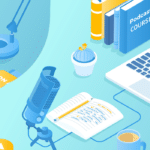For software developers, demo apps and their accompanying tutorials represent a synergistic approach to practical learning. Individually, a demo app or a tutorial offers substantial benefits for those looking to hone their development skills. Together, the two create an avenue for in-depth learning, offering invaluable practical demonstrations that significantly enhance understanding and usability.
This combination provides dual benefits: Users gain knowledge and enhance their skill sets while creators showcase the real-world efficacy of their technology.
This article explores what makes the combination an immensely effective learning tool and a powerful means of product exposure.
Enhancing Learning Through Hands-On Tutorials and Demo Apps
There are few arenas where dry text and rote memorization achieve superb results. If you want your audience to understand and retain what they’ve learned, you must provide an immersive experience grounded in reality. This immersion factor is why the combination of a hands-on demo app and detailed tutorial impacts comprehension and retention so profoundly.
Think of it this way: You could teach someone about gravity using diagrams and long-winded explanations or you could take them outside to drop various items off the roof. A theory-based foundation is helpful, but practical application activates the senses to drive home the point.
The experiential approach to development also caters to different learning preferences and strengths. After all, the more facets there are to interact with, the more options a user has for finding what works. This premise also extends to promoting accessibility: Using several styles of media accommodates a broader learning community with more diverse needs.
When developer audiences can take an active role learning process — even just by deciding whether to view the complete app before the tutorial or, perhaps, alternating between the two — they have a more engaging, enriching journey.
Learn by Doing
Comprehensive tutorials are instrumental in introducing key programming concepts or new technologies, making complex information more digestible. They facilitate the “learn by doing” approach, helping developers answer the “how” and “why” behind each step.
More than mere instruction manuals, these tutorials are educational tools that help turn theory into practice. Step-by-step directions demystify the app-building process, reframing complex tasks as discrete, manageable pieces. Moreover, they offer explanations for when, why, and how certain steps occur — crucial for deeper understanding and greater retention.
Effective tutorials also dissect application architecture, providing insights into how components interact and cooperate. The ability to understand application structure, logic, and design is invaluable in laying the groundwork for efficient, high-quality code with real-world practicality.
Furthermore, comprehensive tutorials are pivotal in introducing and explaining new technologies and concepts. Contextualizing them within a project makes the learning process less daunting. Of course, seeing these concepts in action can make all the difference.
Introducing New Technologies Through Interactive Demos
Beyond aiding conceptual learning, demo apps and their accompanying tutorials are an exceptional medium for introducing developers to new technologies and solutions.
In one respect, there’s inherent value in showcasing the technology to highlight the “wow” factor and garner excitement. More striking, though, is how a tutorial and demo app combine to ground these solutions in practical, real-world contexts. Suddenly, this flashy new tech angle transforms into something broadly applicable to the development flows and ingenuity of its users.
When you implement this dual approach effectively, your audience receives the optimal balance of familiarity, practical knowledge, and exploration, bridging any learning gaps and lowering the new technology’s barrier to entry. The satisfaction gained from this type of experience can also work wonders for their perception of your company.
Building Brand Trust and Loyalty with Practical Solutions
If you want to foster trust among potential users, you need to demonstrate a genuine understanding of their needs, wants, and frustrations. And if your tech solution addresses these points, well, you know where this is going.
Learning how and why a technology works does more than satisfy the curious mind — it provides potential users a glimpse into the thought processes, experiences, and expertise that went into creating it. In other words, offering hands-on experiences of your solution communicates that your primary intent is to help address developers’ needs — not sell to them for the sake of it. Your target audience gains clarity into your offerings, and you receive their trust and loyalty in the process.
Moreover, you’ve reassured them of your shared problem-solving goals via a tangible, memorable experience instead of pandering ad copy (“We’re just like you, we promise!”). Producing demo applications that resolve real-life issues developers face can substantially elevate your credibility among the community — and there are few better ways to stand out from your competitors.
Demo Apps as a Resource for Developer Projects
The value of demo apps isn’t limited to their utility as illustrative tools. They offer virtually limitless code reusability, offering developers a springboard for a new project or an easily integrated addition to existing work.
A functional demo app provides a safe space for experimentation. Developers benefit from starting with code that they know works properly, making modifications and integrating new code to explore additional possibilities.
Then, when they inevitably encounter a bug or broken function, investigating and debugging is far less burdensome. Comparing the current code to that of the original, working project makes for much easier troubleshooting.
This rule applies equally to new projects your demo app might inspire. Perhaps the original demo app contains a function accessing a large language model (LLM) to process and summarize submitted customer feedback. The concept sparks an idea, and a developer realizes they can use a modified version of the function to create a user-friendly database of film and television synopses based on existing transcripts. Maybe they’ll even dress up the user interface with some AI-generated imagery.
Thanks to the usability of the original project code, this developer can integrate LLM capabilities into her new application confidently, gaining the inspiration to expand her skill set along the way. Having already grasped some new concepts from completing your tutorial, they feel equipped and eager to push their innovative boundaries.
The resulting application may be a complete departure from what you provided, but this user is unlikely to forget the brand that became the catalyst for their newest passion project.
Conclusion
Learning preferences among developers are as diverse as the community itself. The beauty of the dual approach — easily navigable tutorials and complementary demo apps — is that it inherently caters to this spectrum. An enriched learning environment demands deeper engagement with the material, resulting in a more comprehensive understanding and retention of the concepts at play.
Furthermore, the confidence of learning and remembering new technology sparks a uniquely powerful drive to innovate, explore, and create. And when your service or product is at the heart of this phenomenon, the developers who use it will remember.
Need help crafting content that speaks directly to developers’ needs? Contact ContentLab today to learn how we can help.





